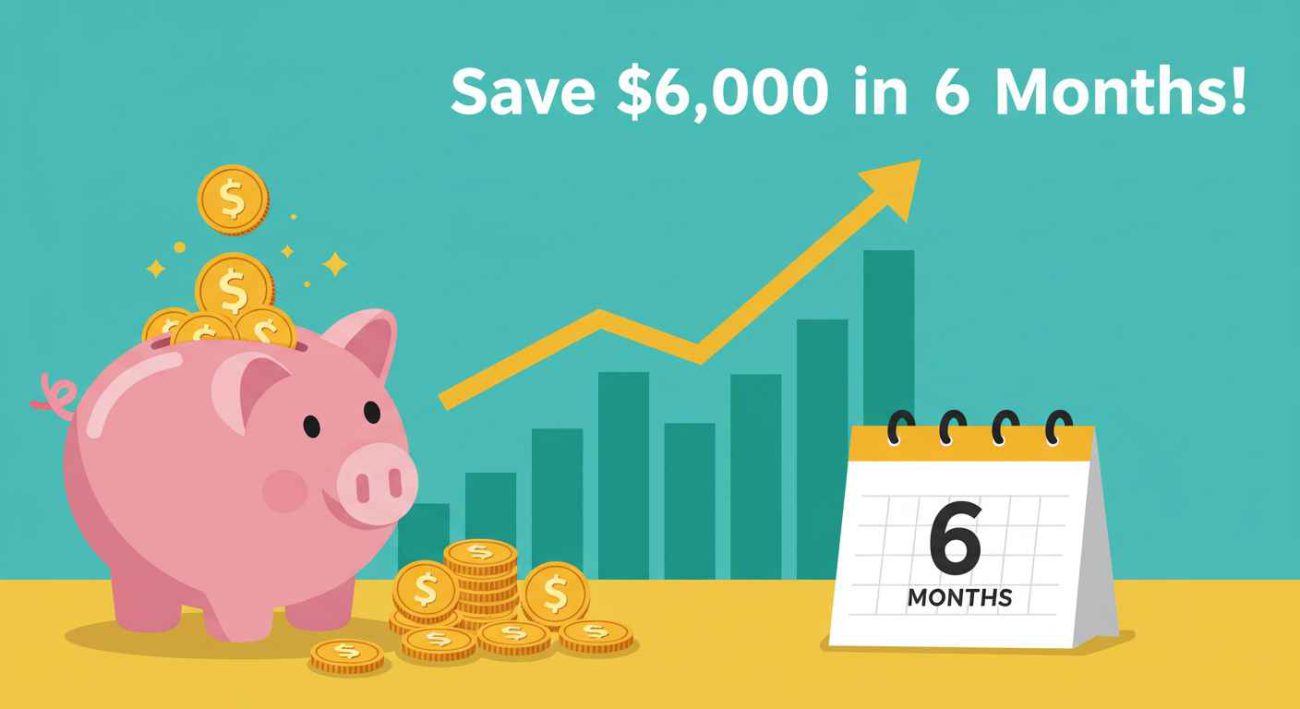Your car breaks down, your fridge goes kaput, or an unexpected medical bill lands in your mailbox. Life has a way of throwing curveballs when you least expect it, doesn’t it? Without a financial safety net, these surprises can feel like a storm tearing through your peace of mind. That’s where an emergency fund comes in—a financial lifeboat to keep you afloat. This article will guide you through building a robust emergency fund in just six months, offering practical steps to secure your future without stress. Ready to take control and create a buffer that lets you breathe easier? Let’s dive in and explore how to make it happen.
1. Set a Clear, Achievable Goal
First things first: how much do you need? A solid emergency fund typically covers three to six months of living expenses—think rent, groceries, utilities, and other essentials. Calculate your monthly expenses (be honest!) and aim for a target that feels ambitious yet doable. For most, $3,000 to $10,000 is a good range, depending on your lifestyle and responsibilities. Break it down: if you want $6,000 in six months, that’s $1,000 a month. Setting a specific number gives you a target to hit, making the process feel less like chasing a vague dream and more like a game plan you can win.
2. Assess Your Current Finances
Before you start squirreling away cash, take a hard look at your income and expenses. Grab a notebook or use a budgeting app to track where your money goes each month. Are you spending $200 on takeout? Could subscriptions be trimmed? This isn’t about guilt—it’s about clarity. Knowing your financial flow helps you spot opportunities to redirect funds toward your emergency savings. Think of it as decluttering your budget: you’re making space for what truly matters—your peace of mind.
3. Start Small, but Start Now
Don’t let a big goal intimidate you. Even $50 a month adds up over time, and the habit of saving is what counts. Open a separate high-yield savings account for your emergency fund—online banks often offer better interest rates than traditional ones. Automate a small transfer, like $25 per paycheck, to kick things off. It’s like planting a seed: it may start tiny, but with consistent care, it grows into something substantial. What small amount can you commit to today?
4. Cut Expenses Without Feeling Deprived
Saving doesn’t mean slashing all joy from your life. Look for smart cuts that don’t sting. Maybe you brew coffee at home a few days a week or cancel that streaming service you rarely use. Negotiate bills—cable, internet, or even insurance can often be lowered with a quick call. Redirect those savings straight to your emergency fund. It’s like redirecting a river: small changes in flow can lead to a powerful stream of savings over time.
5. Boost Your Income with a Side Hustle
If cutting expenses isn’t enough, why not bring in a little extra? A side hustle can supercharge your savings. Whether it’s freelancing, pet-sitting, or selling unused items online, even a few hours a week can make a dent. For example, driving for a rideshare app or tutoring online could add $200–$500 a month. The key is to funnel this extra income directly into your emergency fund—treat it like it’s not even yours. What skills or hobbies could you turn into a quick cash boost?
6. Make Saving a Game
Turn saving into something fun, not a chore. Try a no-spend challenge for a week, where you only buy essentials. Or set mini-milestones: save $500, treat yourself to a small reward (like a favorite dessert, not a vacation!). Track your progress with a chart or app—it’s satisfying to see your fund grow, like watching a plant bloom. Gamifying the process keeps you motivated and makes the journey feel less like a sacrifice.
7. Protect Your Fund from Temptation
Your emergency fund is sacred—don’t dip into it for non-emergencies. Keep it in a separate account, ideally one that’s not linked to your checking for easy access. Label the account something like “Lifeboat Fund” to remind yourself of its purpose. If you’re tempted to spend it on a shiny new gadget, pause and ask: “Is this an emergency, or just a want?” This mental checkpoint helps you stay disciplined while keeping your financial fortress intact.
8. Adjust and Stay Flexible
Life changes, and so might your savings plan. If you hit a rough month—say, an unexpected bill—don’t give up. Adjust your savings goal temporarily and get back on track when you can. The beauty of building an emergency fund is its flexibility; it’s not about perfection but persistence. Think of it as a marathon, not a sprint. What’s one small tweak you could make if life throws you a curveball?
9. Celebrate Your Progress
Every dollar saved is a win, so don’t wait until you hit your full goal to celebrate. When you reach $1,000, give yourself a pat on the back. Share your progress with a friend or family member—it’s motivating to have a cheerleader. Celebrating milestones keeps your momentum high and reminds you that you’re building something valuable, brick by brick. How will you mark your first savings milestone?
A Safety Net Tailored to You
Building an emergency fund in six months is a powerful step toward financial freedom, but it’s not a one-size-fits-all journey. Some months, you might save more; others, life might demand a pause. That’s okay—your fund is as unique as your life. The insights here, from setting clear goals to gamifying your savings, are tools to shape your path. Start small, stay consistent, and soon you’ll have a safety net that lets you face life’s surprises with confidence. So, what’s your first step today? Take it, and watch how quickly your emergency fund becomes a source of pride and peace.

